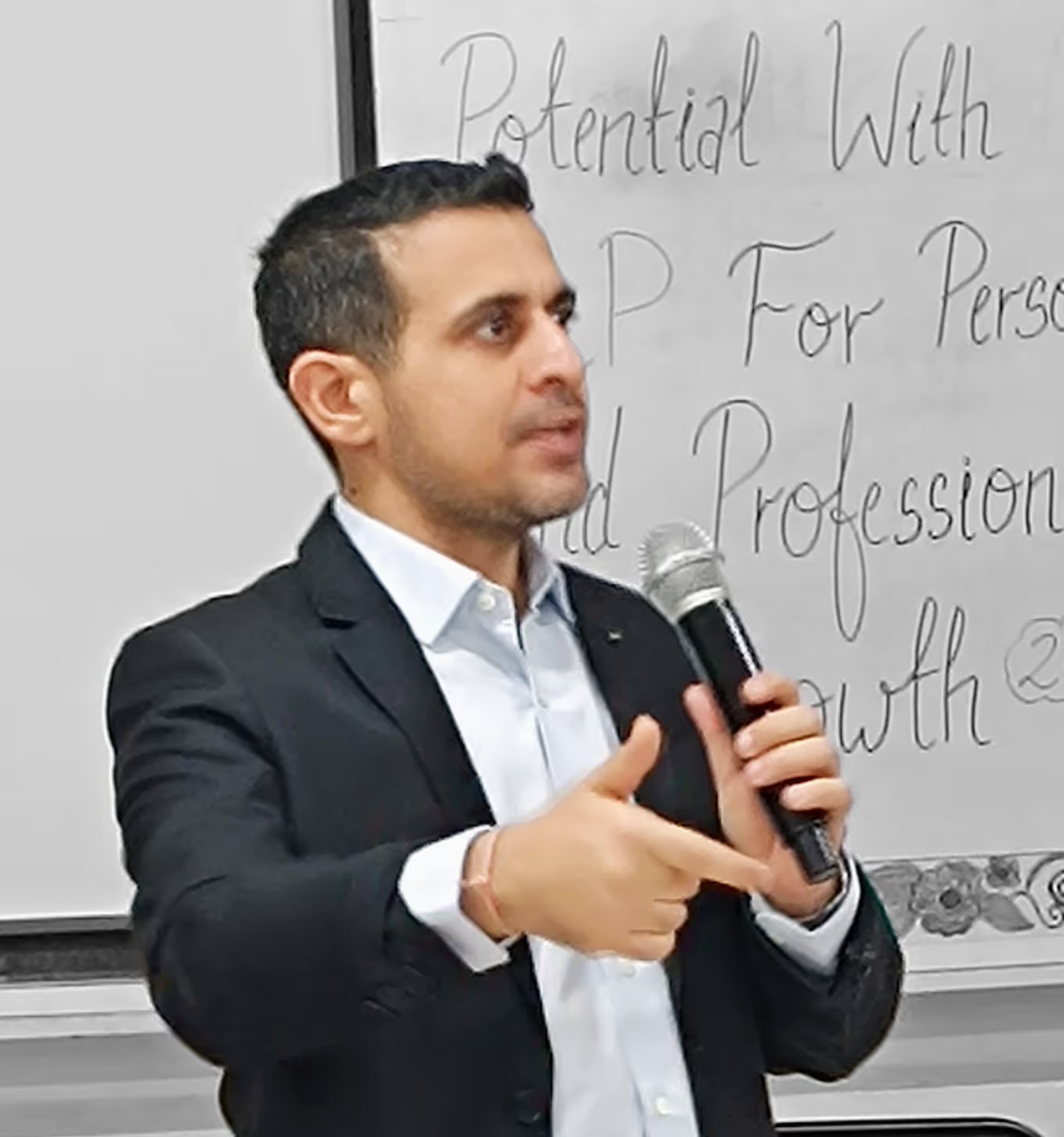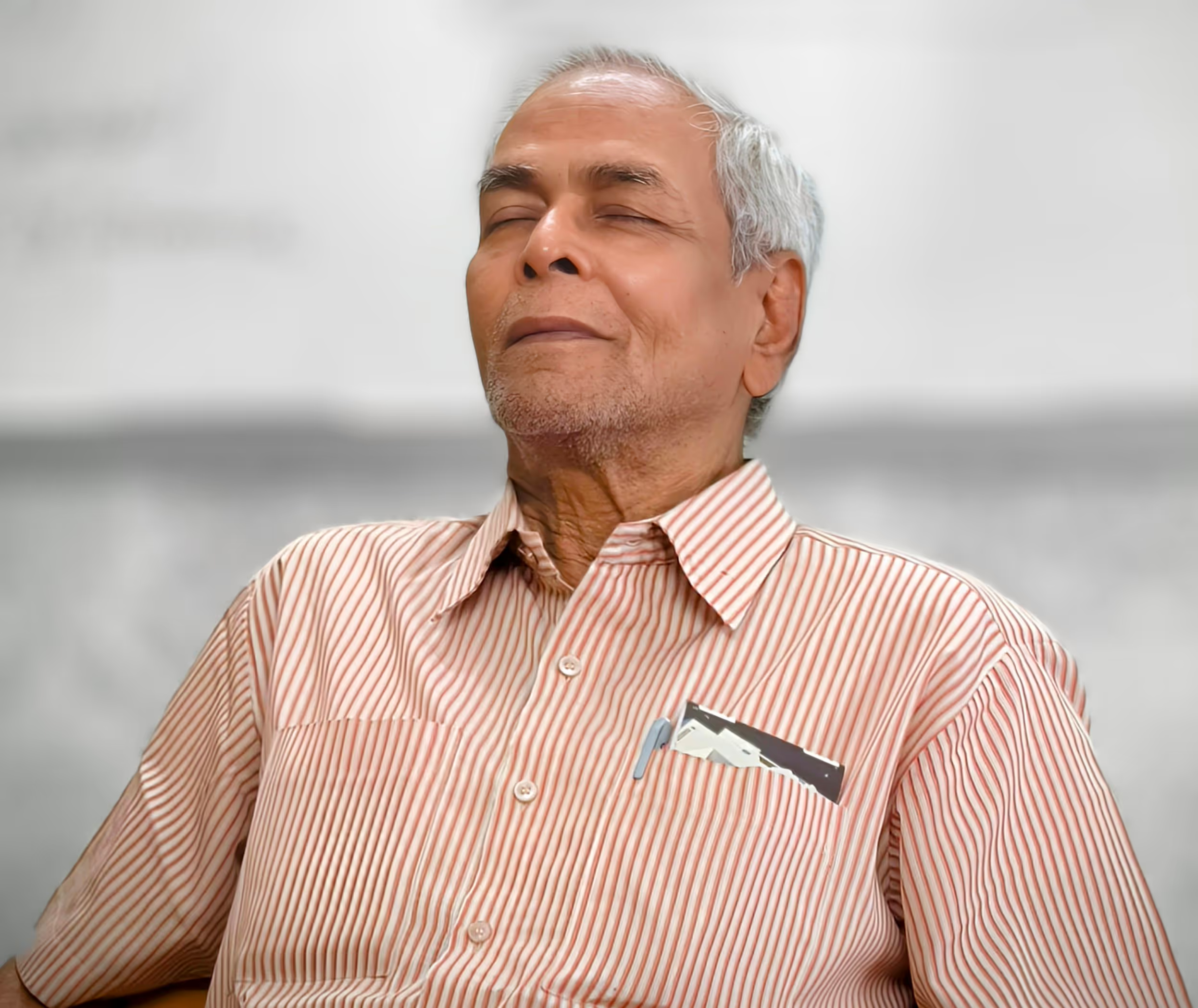
NLP Modelling enables us to accelerate our learning process of any skills that we wish to learn.
NLP Modelling is known as the core activity of Neuro Linguistic Programming.
Since NLP was founded on the basis of NLP modelling which was done by NLP founders - Dr. John Grinder, Richard Bandler and Frank Pucelik.
Hence, John Grinder (NLP co-founder), defines Neuro Linguistic Programming as a modelling technology.
NLP Modelling can be explained as the process of recreating excellence from a role-model (person) of your choice.
The process of NLP modelling involves recognising and thereafter applying patterns a model does to gain the results that he/she gains.
NLP Modelling was initially applied by the co-creators of NLP- Dr. John Grinder, Richard Bandler and Frank Pucelik, who began modelling the behaviours and strategies of successful therapists - Virginia Satir, Fritz Perls and Dr. Milton Erikson.


NLP modelling helps average individuals achieve the similar results that the genius or higher performing model is achieving. Hence, it serves to accelerate an individual’s learning process as it helps you detect, learn and implement the patterns of a genius to become one.
In fact, most of the NLP techniques were developed using NLP modelling, placing it at the very core of NLP and its applications.
Some of the important components of an NLP modelling process involved recognising the linguistic and behavioural patterns of the model’s behaviour, the internal thought process—which may involve cognitive aspects—and their perspective of their environment, their physiology and communication patterns.


Modelling, as a process of learning, has been used naturally by each of us ever since we are born.
How did we learn the language that we speak at home?
By simply imitating the language used by our family members with whom we interacted with as a child.
Besides the language, we even imitated the accent.
Hence, even though 2 people may speak the same language, the accent of speaking that language can be different.
Hence, modelling is a method of learning that involves unconscious and conscious process of imbibing and assimilating by imitation.


Many of our behaviours, beliefs, values are a reflection of what we have learnt unconsciously from people around us, especially our parents.
According to research done by a well-known sociologist – Maurice Massey, our values get developed in the 3 major stages of our life:

During this stage, we easily absorb unconsciously – the values, beliefs and sense of identity from those around us.
Most of our interaction is with family at this stage.

During this stage, we continue to unconsciously absorb values, beliefs, habits, behaviours from those around us.
As a result, now the behaviours we are exhibiting is a reflection of what we have been unconsciously absorbing.
Most interactions in this stage are with family, friends, teachers, educational institutes.

During this stage, a person begins to establish his own identity.
Further, habits and behaviours are highly influenced by peers and the media.
To sum up the above 3 stages, as the individual grows up, his values, beliefs, behaviours and habits are a direct reflection of what he had consciously and unconsciously absorbed and learnt during the 3 stages.

Modelling is the methodology of learning through unconscious assimilation (and conscious assimilation) by imitating.
Since each one of us has been naturally doing this process, each of us is a natural modeller.


Further, due to the process of modelling, we learn and operate with a certain set of ‘enabling beliefs’ and ‘limiting beliefs’.
Certain beliefs that are enhancing our life, which leads to success and happiness are known in NLP Trainings as ‘enabling beliefs’.
On the other hand, certain beliefs that are preventing us from living our life to full potential are known in NLP Trainings as ‘limiting beliefs’.
Importantly, it possible to transform the ‘limiting beliefs’ and even enhance the ‘enabling beliefs’ so that we live our life to our fullest. Even with several NLP techniques and tools, an NLP Coach can enable you to do so.
Transform your beliefs to transform your life!
Neuro-Linguistic Programming (NLP) is the study of the difference that makes the difference between the consistent high performances of a genius (either an individual or team) and the “average” performer in the same field of human endeavor.
Through NLP modelling, the differences and patterns of a genius can be decoded and applied in life. Consequently, others too can achieve the same results that the genius is achieving.
Hence, due to this process of NLP modelling, NLP is also known as an accelerated form of learning.
For more information visit ‘What is NLP?’.
.webp)

“NLP essence is modelling skills – the explanation and codification of behavioural skills that make a distinction between ordinary and brilliant”
– John Grinder (co-creator of NLP)
(As per the definition stated by Dr. John Grinder and Carmen Bostic St Clair in their NLP book – ‘Whispering in the wind’.)
NLP began as a modelling technology when the co-creators of NLP – Dr. John Grinder, Richard Bandler and Frank Pucelik, modelled:
• Dr. Milton H Erickson (Hypnotherapist)
• Fritz Perls (founder of Gestalt Therapy)
• Virginia Satir (Family Therapist)
Based on the extensive modelling that the co-creators of NLP did, most of the NLP techniques and tools were developed.


For example, topics such as Milton Model and Meta Model, which are usually taught by NLP trainers in their NLP workshops, are based on the work of Dr. Milton Erickson, Virginia Satir and Fritz Perls.
John Grinder, in the NLP book – ‘Whispering in the Wind‘–‘ – shares that the NLP techniques and tools are the applications of NLP and the core of NLP is modelling.
To know more about the History of NLP visit NLP History.
NLP modelling which I have learnt from Frank Pucelik in his NLP course (NLP Master Practitioner certification course) is different from NLP modelling, which I have learnt from Dr. John Grinder in his NLP course.
Further, it can be done in other ways too, such as ‘analytical modelling’, which is taught in some NLP certification trainings in India and abroad.
Importantly, NLP modelling still remains the core of NLP.


(Some NLP trainers usually teach NLP modelling in their NLP Master Practitioner course).
On this page, I am sharing the steps of NLP Modelling, which I had learnt in Dr. John Grinder’s NLP training.

1. Identifying a model
2. Unconscious uptake
3. Systematic deployment
4. Codify the pattern
5. Testing the model
Firstly, for the process of NLP Modelling, it is important to identify a person (or group) who will be the model.
Certainly, in every field of human endeavor, there is a person or may perceive a person to be a genius or the best.
Once you have identified the model, find ways through which you can observe that individual (ideally face to face interaction).
Remember, "Genius is not confined to well-known celebrities; there is a genius in everyone.” – John Grinder


This step involves the unconscious assimilation of the patterning that the model embodies.
The process involves simply taking in all the information through the senses without any filters. (Senses are also known as representational systems in NLP trainings).
Hence, the process involves just taking in and imbibing the aspects or pattern of behaviour of the model without questioning it and it involves taking any information without any filters or colouring it with your biases.
A state that ensures you take in the information completely is the ‘know-nothing’ state. (Through certain NLP techniques and tools that I share in my New Code NLP courses in India and abroad, ‘know-nothing’ state can be learnt to access.)
The reason behind this step is that it yields a significantly more robust and complete representation of the patterning offered by the model.
“The bandwidth of unconscious processes far exceeds that of conscious processes – thus, a pattern will always be detected initially by the unconscious processes.”
– John Grinder
In this step, the modeller systematically implements the patterns of the model that he had absorbed through the unconscious assimilation.
The modeller implements the patterns in a manner that demonstrates the same level of competency in the task being modelled.


Upon reaching the criteria of 2nd and 3rd step, the modeller begins the task of codifying the patterning now resident in himself/ herself as well as the source of the patterning – the model (the original individual or a team).
Since this implies that there are now two sets to enable the modeller to codify the pattern, there is more information to code the task that is being modelled.
As a result, this allows the modeller to know further; what it is that the model does to achieve results.
During the coding of the pattern, there is also a conscious understanding of what the model is doing to achieve excellence.
Importantly now, if the modeller gets the same results as the model, then the modelling project is considered a success.
On the other hand, if the same results are not achieved, the process must be restarted from step 2.


Some of the applications of NLP Modelling include:
1. Understanding more about a process by engaging in ‘meta-cognition’ about the process and attaining specific outcomes.
2. Specifying the actions taken by expert performers or during optimal examples of the activity in order to repeat or refine a performance (such as in a sport or as a manager).
For example, perfecting a cover drive as performed by expert in the domain, Virat Kohli.
Training in NLP modelling enables you to take on and inculcate the best traits of the role model that you have chosen.
Therefore, NLP modelling is a wonderful tool that is used by NLP trainers worldwide to consistently achieve highly successful results. Enrolling in the Transformative NLP training and becoming an NLP coach / Life Coach / NLP Practitioner could be the perfect start to master this talent and should you choose to transform your life!

Many NLP Trainers and NLP coaches are getting trained through NLP Certification Trainings in India and across the world on a regular basis.
Importantly, many of them are getting consistent high results through the applications of NLP modelling as well as NLP techniques and tools.
Therefore, the modelling projects that the co-creators of NLP did, is considered as a success.
To enhance your knowledge you can read about Richard Bandler and NLP Modelling.
“Tell me and I forget, teach me and I may remember, involve me and I learn” – Benjamin Franklin
Christina Hall, in this video, shares how she went about learning from Richard Bandler when she was working with him.